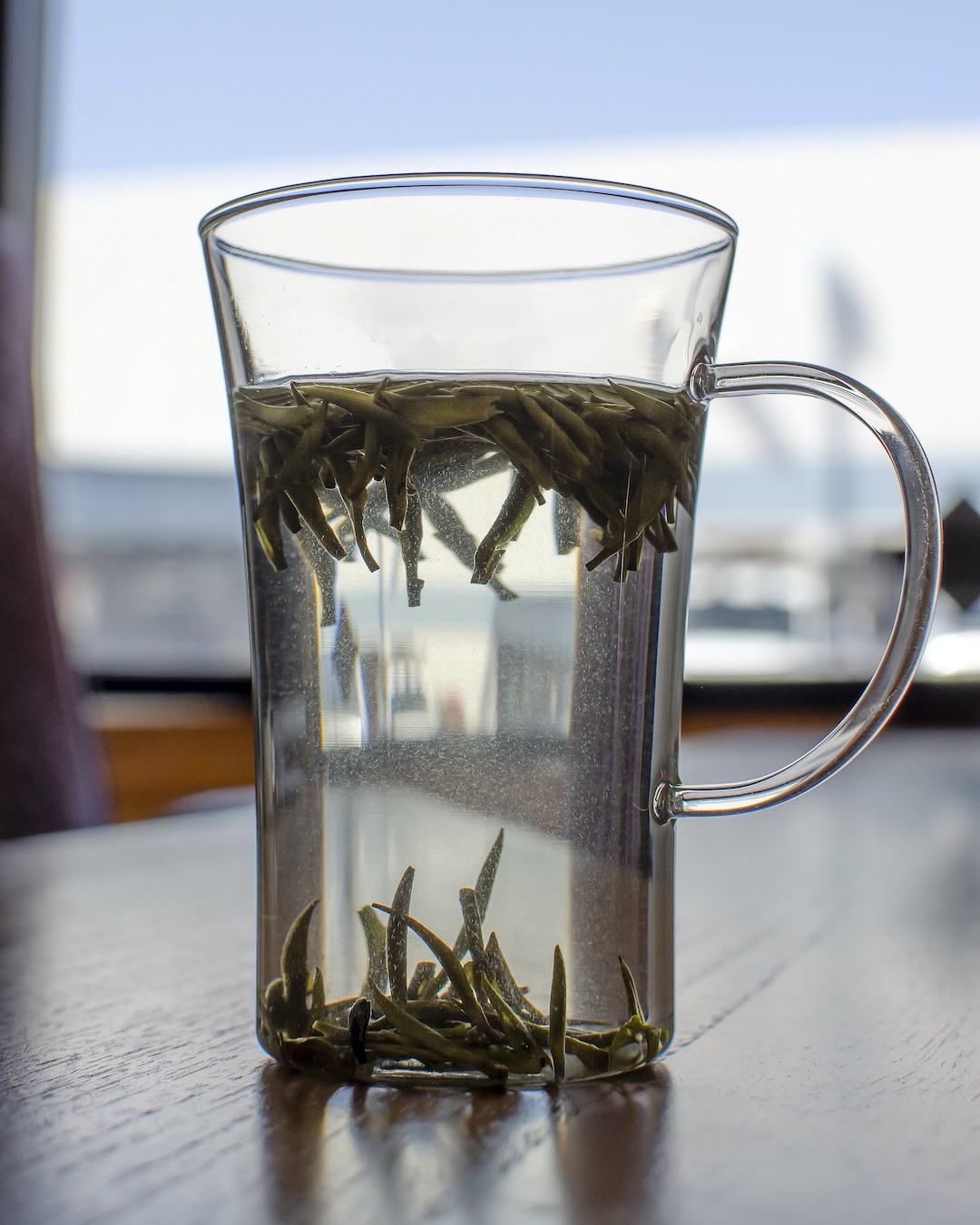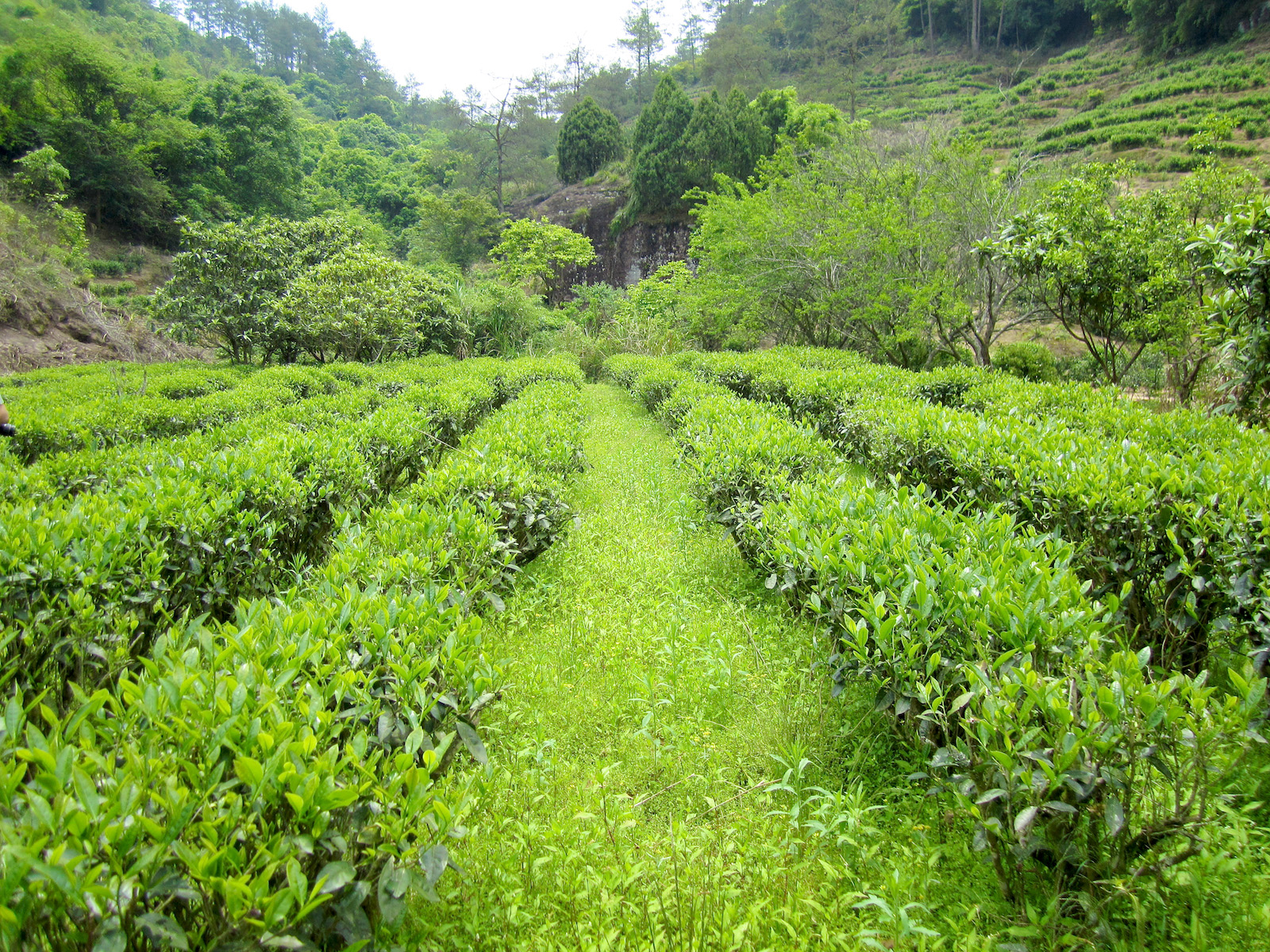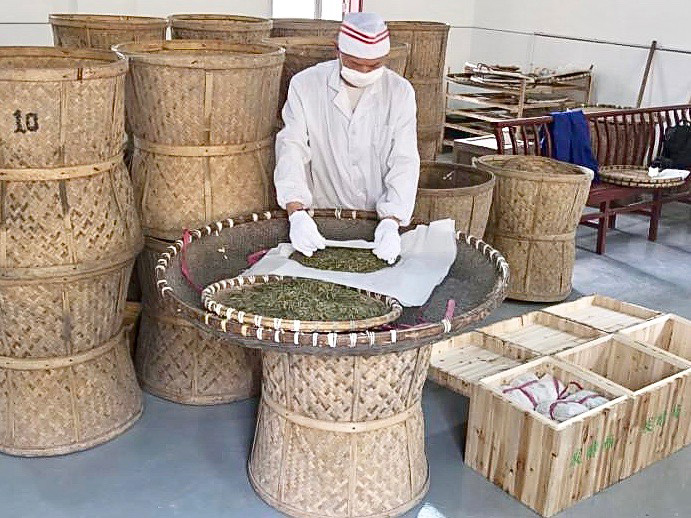Newsletter Archive Aug. 6, 2021

Have you experienced true yellow tea? It can be a little hard to find, even when you go to the source looking for it.
Zhuping’s first trip to Junshan Island in 2008 proved to her just how elusive yellow teas are. She arrived in bristlingly cold February, when the lake waters were low enough to drive onto the island by a landbridge. Guided by the factory boss of the most prominent Junshan Yinzhen producer at the time, Zhuping toured the island in the chilly morning fog. In addition to the island’s tea industry and research station, part of its land is a nature park that’s open to the public and home to a few teahouses. Taking refuge from the cold, the factory boss and Zhuping ducked into one of these teahouses and ordered (what else?) Junshan Yinzhen. To Zhuping’s surprise (and the factory boss’ embarrassment) the tea that they were served looked sort of like Junshan Yinzhen, but it was green tea — not the traditional yellow tea that’s made Junshan Yinzhen a prominent name.

Zhuping and the boss were interested in getting the real thing, so they moved to a second teahouse and then a third, each time only finding green tea with the Junshan Yinzhen name on it. Finally, the factory boss, now a bit red in the face, suggested they go to the tea factory for tea. At least there they knew what they were getting. You can go straight to origin, know the right people, ask for a tea by name, and still have a heck of a time finding it.
Of course, the work of sourcing is more than just going to “the source,” opening up a suitcase and stuffing tea in. It takes persistence, relationships, time, and paying attention to not only to what your own customers like, but also knowing what’s going on with a tea’s local market as well.
The local market conditions in this case are the overwhelming preference for green tea over yellow. In fact, Junshan Yinzhen’s situation is common among all of the famous yellow teas in China. Famous yellow tea origins are likely to produce more green tea than yellow. That green tea is often sold under the name of its famous yellow tea counterpart. As excellent as that green tea may be, it’s not the real thing. It may be from the same origin, but yellow tea is certainly one of those cases where the expert processing is what defines the tea. We know you’ve supported Seven Cups as our customer because you’re interested in the real thing. We hope you’ll enjoy this opportunity to experience something rare and real.

